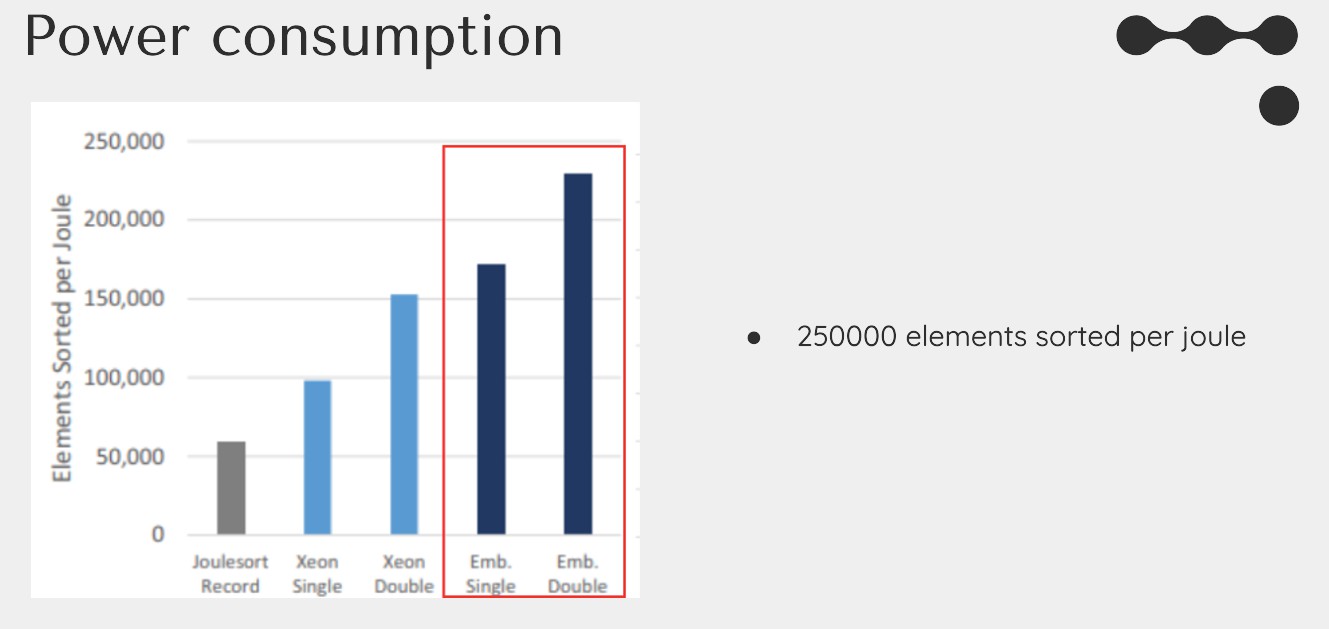Seminar: Large-Scale Sorting
Contents
Rationale
Large data - more computations to sort - slow.
FPGAs have potential for tailored design and parallelism
Hardware Basics of Sorting

Types of Sorts
Insertion sort
Time Complexity: O(n^2)
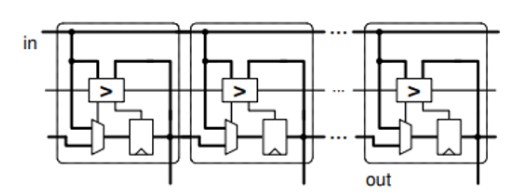
Issue - the architecture would not allow fast and large implementations with many comparators because the input signal has to be broadcasted to all comparator instances
not good for large sets
Bucket Sort
Time Complexity: O(n^2)
Divide and conquer, based on a pivot point
Merge Sort
Time Complexity: O(n log(n))

FIFO-based Merge Sort
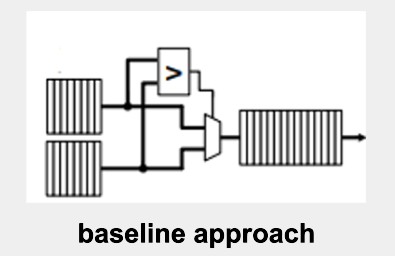
We can cascade several sorters
Each cascade will double the required memory resources
Merge Sort Trees

Backpressure flow control in the network
Sorting Networks
FPGA designs can obtain a time complexity of O(log n * log n)
Common architectures include the bitonic merge sort network, and even-odd networks.
For large sets... still an issue..
Optimised Merge-Sort Micro-Architecture

- Bitonic Sorter stage 1 - Optimal sorting of 4 elements
- Bitonic Half Cleaner - Switching of 2 elements by value
- Bitonic Sorter stage 2 - Optimal sorting of 4 elements
n-tuple sorting
Imagine we have data of arbitrary size n
An n-tuple has N= floor(bandwidth / sizeof(element)) elements

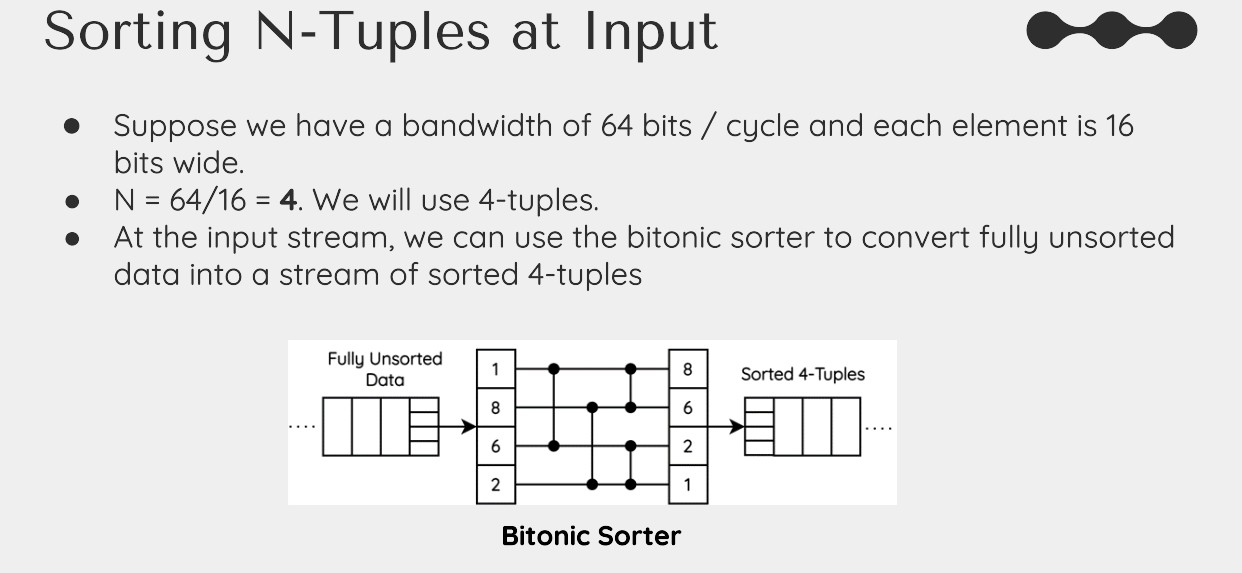
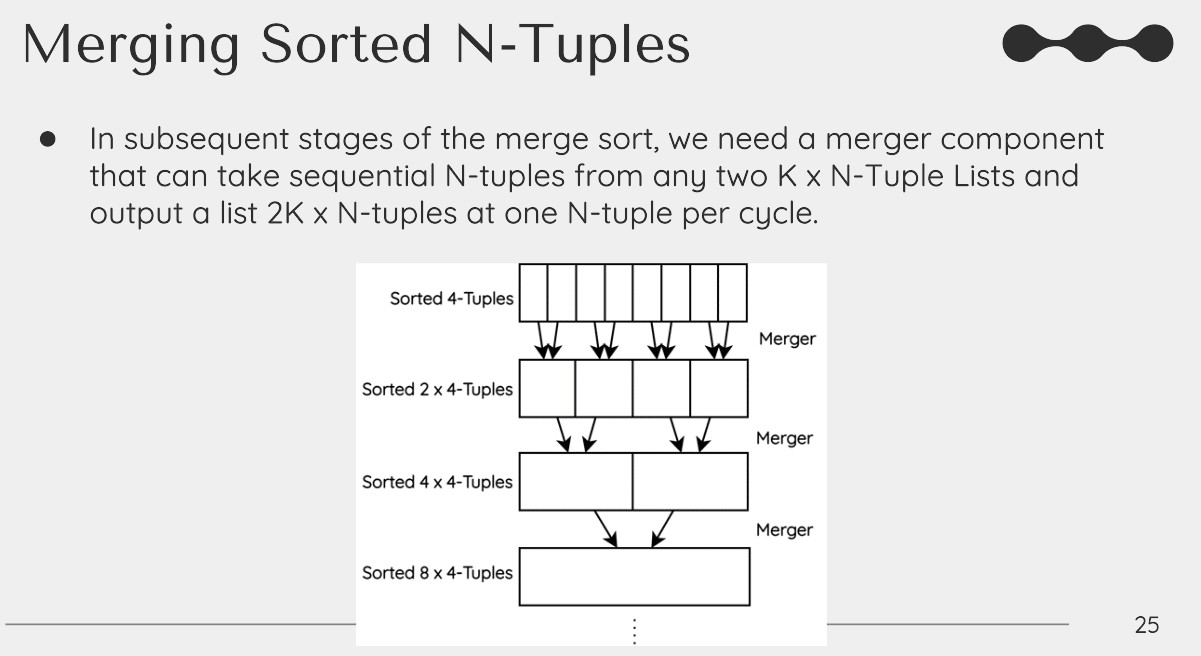

Macro Architecture
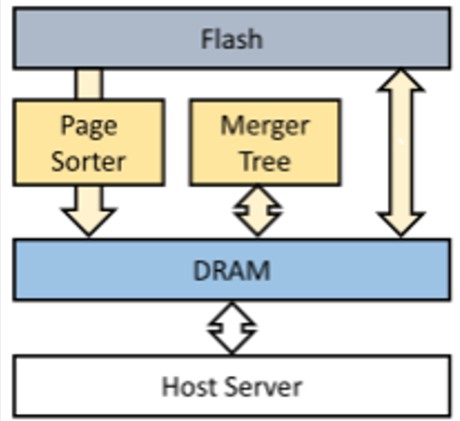

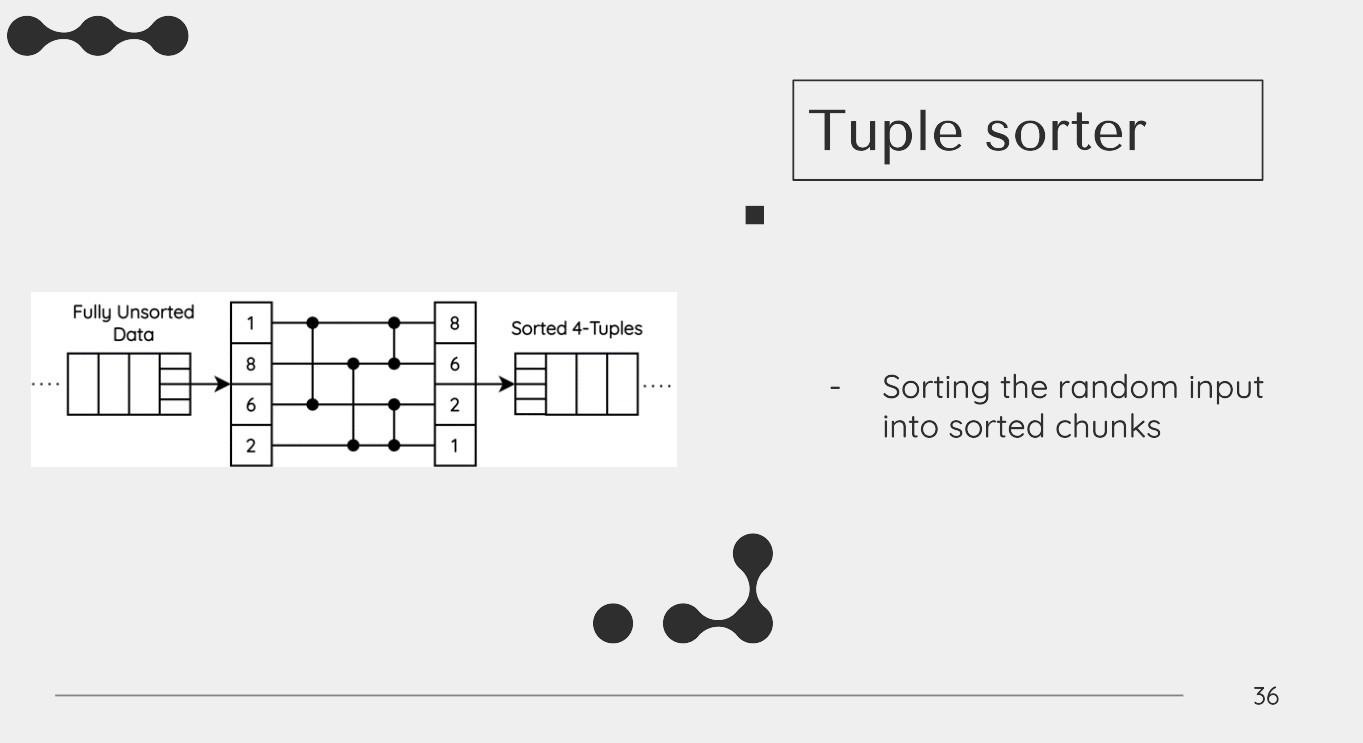
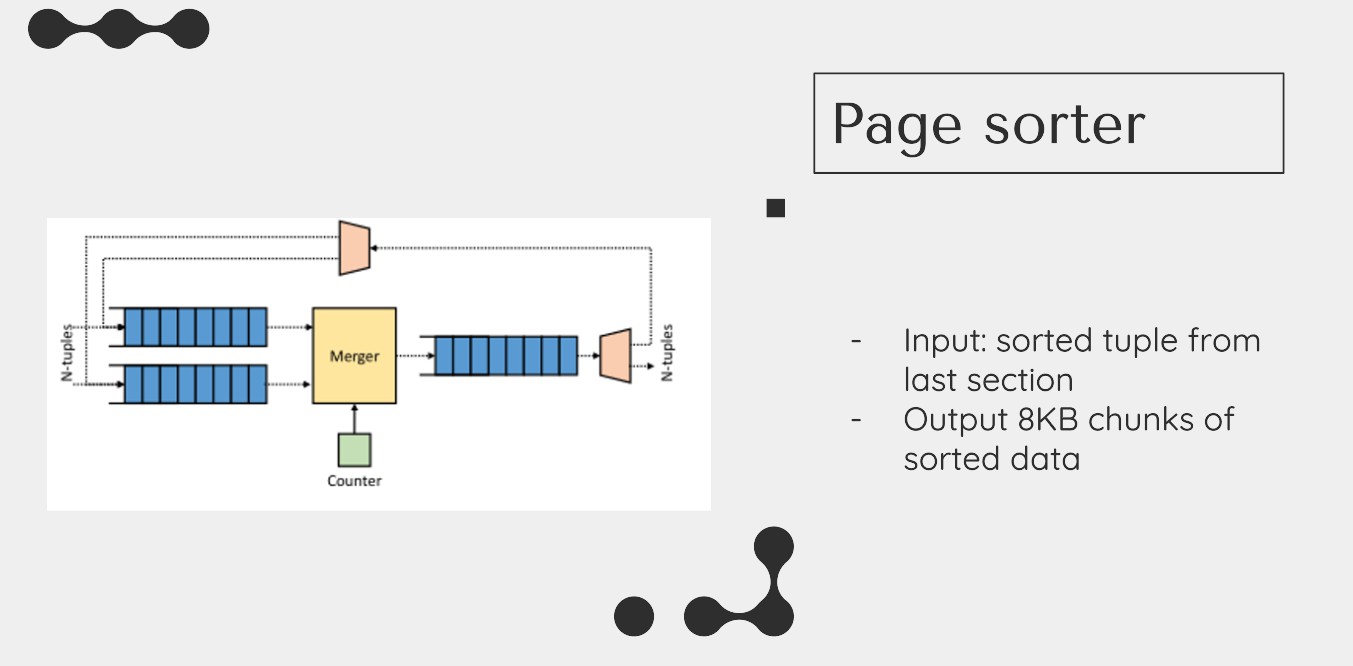
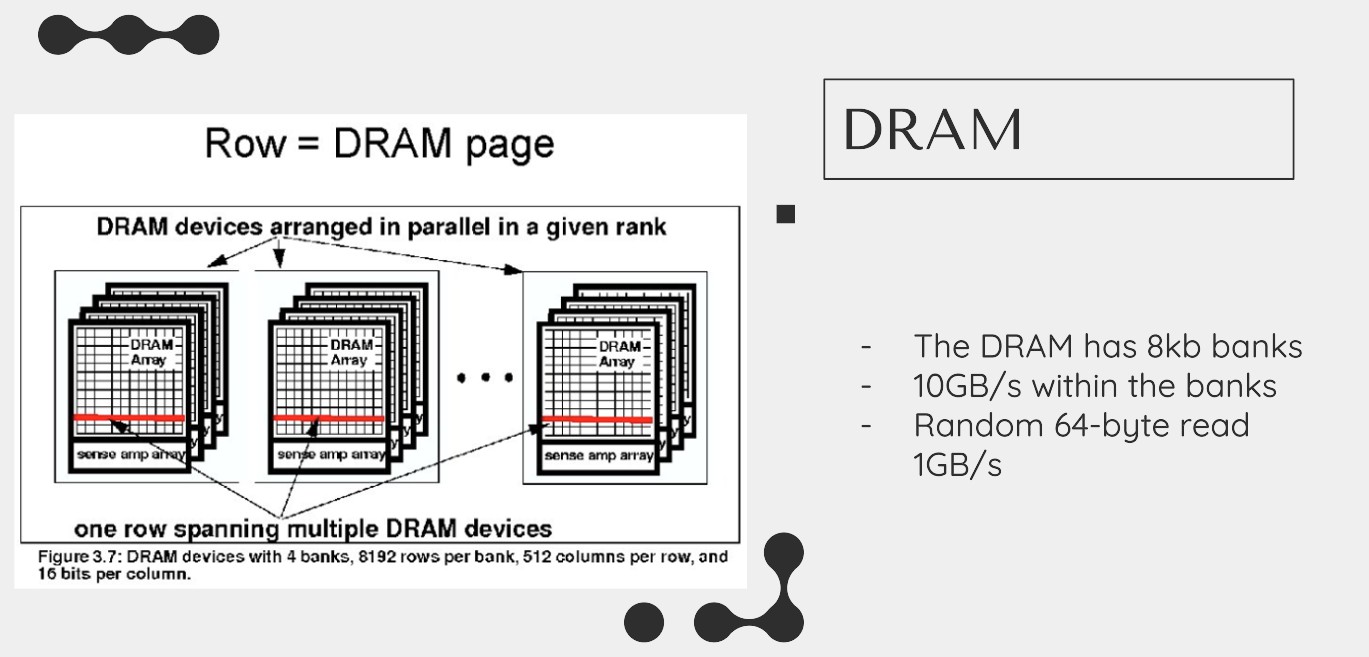

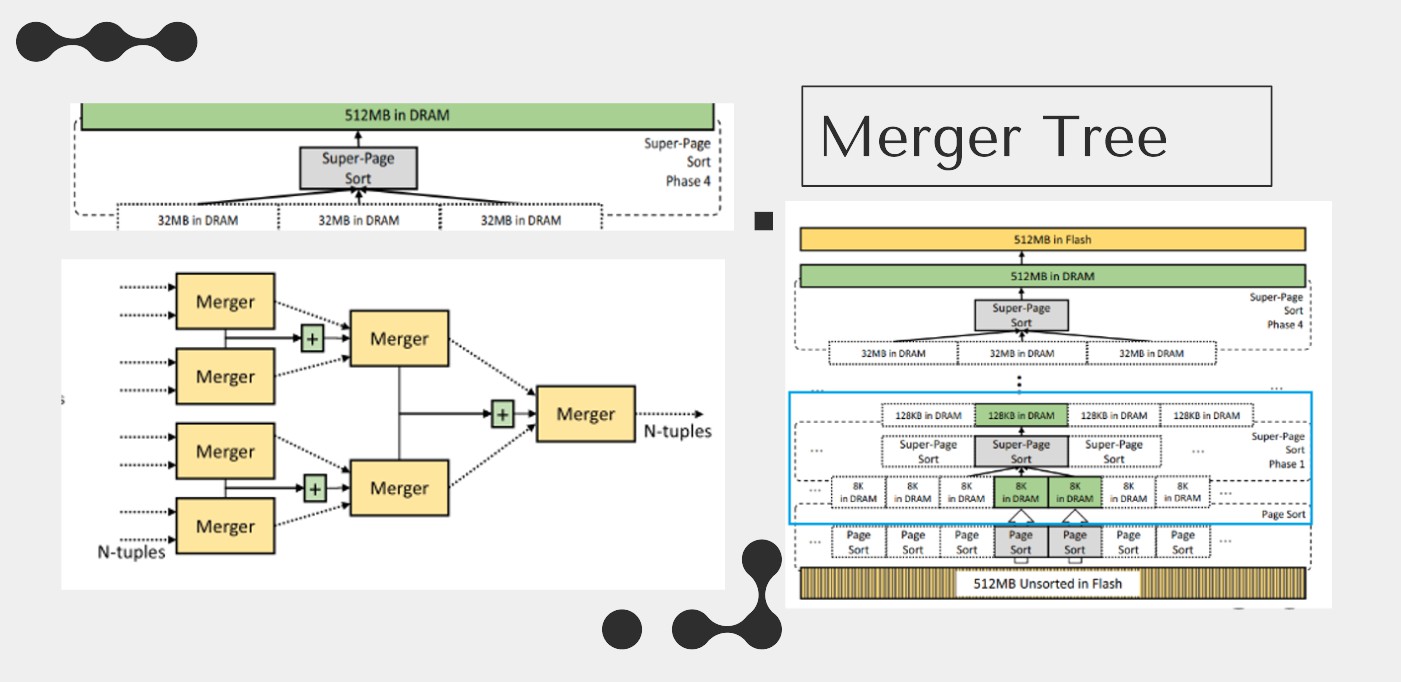
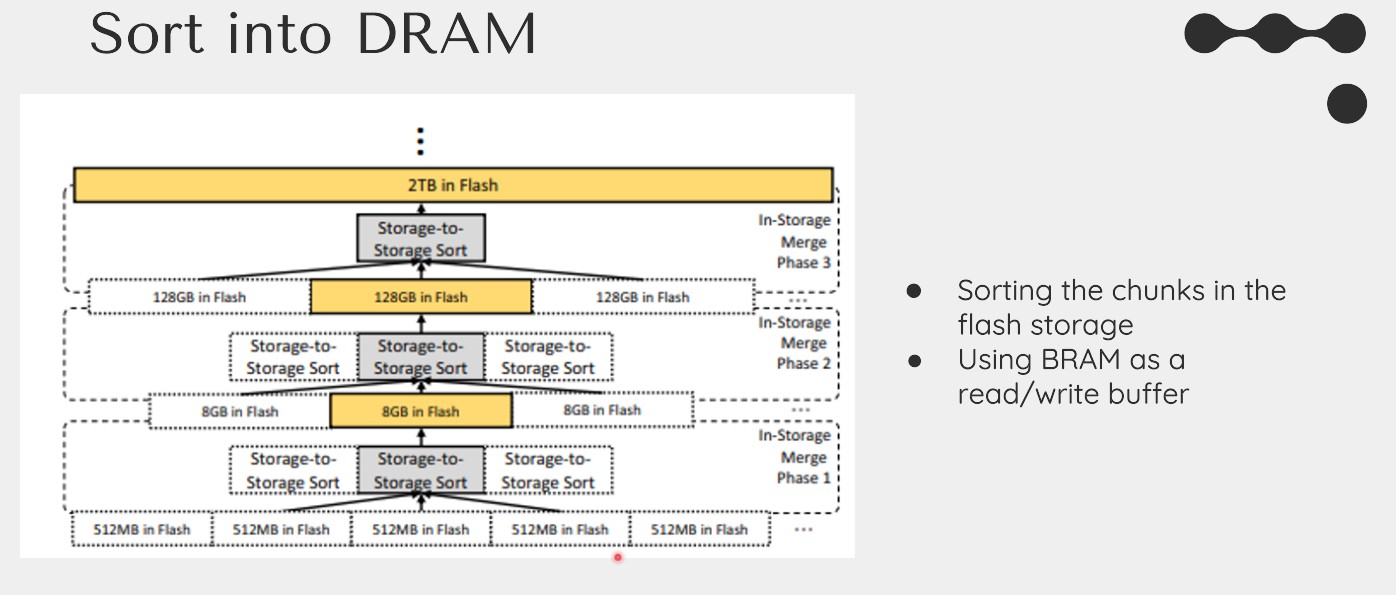
Performance



